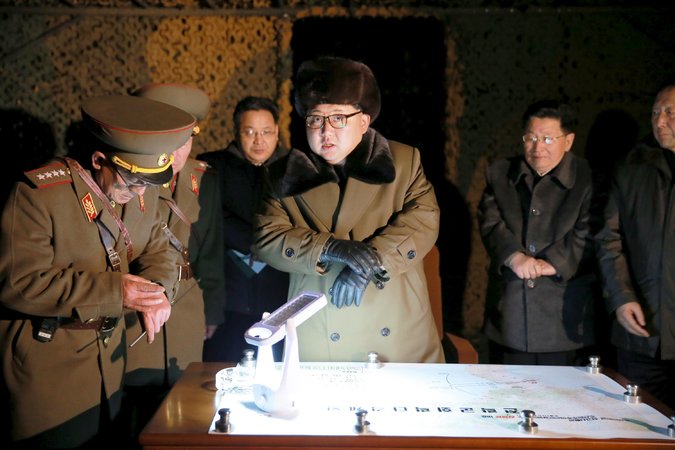
North Korea claimed Sunday that it could wipe out Manhattan by sending a hydrogen bomb on a ballistic missile to the heart of New York City, the latest in a string of brazen threats.
Although there are many reasons to believe that Kim Jong Un’s regime is exaggerating its technical capabilities, the near-daily drumbeat of boasts and warnings from North Korea underlines its anger at efforts to thwart its ambitions.
North Korea leader says nuclear warhead re-entry test a success
“Our hydrogen bomb is much bigger than the one developed by the Soviet Union,” DPRK Today, a state-run outlet, reported Sunday. DPRK stands for the Democratic People’s Republic of Korea, North Korea’s official name.
“If this H-bomb were to be mounted on an intercontinental ballistic missile and fall on Manhattan in New York City, all the people there would be killed immediately and the city would burn down to ashes,” the report said, citing a nuclear scientist named Cho Hyong Il.
The website is a strange choice for making such a claim, given that it also carries reports about such topics as rabbit farming and domestically made school backpacks.
North Korea’s newly developed hydrogen bomb “surpasses our imagination,” Cho is quoted as saying.
“The H-bomb developed by the Soviet Union in the past was able to smash windows of buildings 1,000 kms away and the heat was strong enough to cause third-degree burns 100 kms away,” the report continued. (A thousand kilometers is about 625 miles; 100 kilometers, about 62.5 miles.)
Kim in January ordered North Korea’s fourth nuclear test and claimed that it was a hydrogen bomb, not a simple atomic one. But most experts are skeptical of the claim, saying the seismic waves caused by the blast were similar to those produced by the North’s three previous tests.
China-made truck used by North Korea in new artillery system
Then in February, Kim oversaw the launch of what North Korea said was arocket that put a satellite into orbit, a move widely considered part of a long-range-ballistic-missile program.
North Korea has made advances in its intercontinental-ballistic-missile program, and though experts generally conclude that the United States’ West Coast could be within reach, there has been no suggestion that the North would be able to hit the East Coast.
Many experts are also skeptical of the “miniaturized warhead” that Kim showed off last week during a visit to a nuclear weapons plant.
But Jeffrey Lewis, director of the East Asia nonproliferation program at the Middlebury Institute of International Studies at Monterey, warned against dismissing the claim too soon.
“It does not look like US devices, to be sure, but it is hard to know if aspects of the model are truly implausible or simply that North Korean nuclear weapons look different than their Soviet and American cousins,” Lewis wrote in an analysis for 38 North, a website devoted to North Korea. “The size, however, is consistent with my expectations for North Korea.”
As international condemnation of the North’s acts mounted, culminating this month in the United Nations’ toughest sanctions yet against Pyongyang, Kim’s regime has become increasingly belligerent, firing missiles into the Sea of Japan — also known as the East Sea — and issuing a new threat or denunciation almost every day.
N. Korea issues new threats as US stages military drill with South
The sanctions coincide with annual spring drills between the U and South Korean militaries, which Pyongyang considers a rehearsal for an invasion. The ongoing exercises are viewed as particularly antagonistic because special forces are practicing “decapitation strikes” that target Northern leaders and the destruction of Pyongyang’s nuclear and missile sites.
This article originally appeared on the New York Times, a partner of The Express Tribune.


































































COMMENTS (1)
Comments are moderated and generally will be posted if they are on-topic and not abusive.
For more information, please see our Comments FAQ